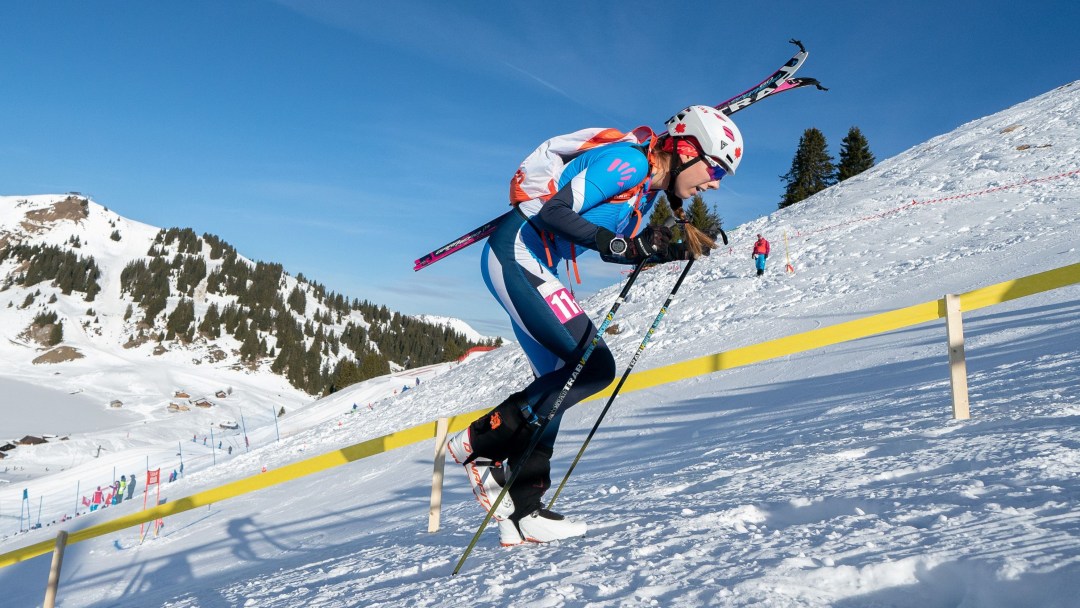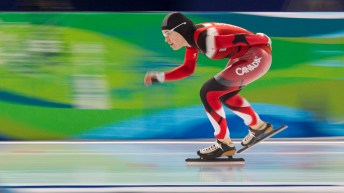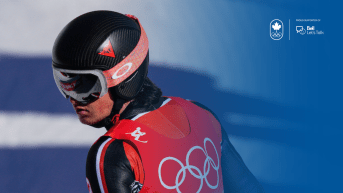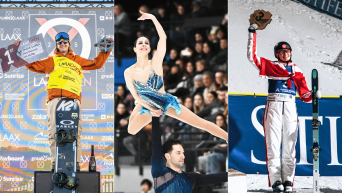Ski Mountaineering
Sport Overview
Ski Mountaineering at Milano Cortina 2026
Venue: Stelvio Ski Centre
Competition Dates: February 19, 21 (Days 13, 15)
Events: 3 (1 men, 1 women, 1 mixed)
| Men’s Events | Women’s Events | Mixed Events |
|---|---|---|
| Men’s Sprint | Women’s Sprint | Mixed Relay |
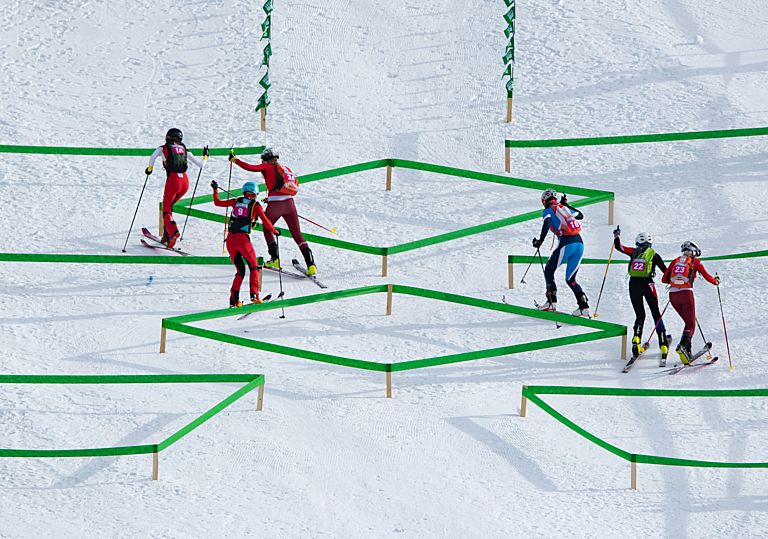
Ski mountaineering (or skimo as a common shortform) combines uphill and downhill skiing with mountaineering skills. The sport is set to make its official Olympic debut at Milano Cortina 2026 after being proposed for inclusion by the Organizing Committee. Ski mountaineering has deep historical roots in the European Alps.
In its first Olympic appearance, ski mountaineering will feature two forms of racing: sprint events for men and women and a mixed relay event.
The sprint race is, as the name indicates, very fast. It includes the essential features of ski mountaineering: an ascent on foot while carrying skis on a backpack, an ascent on skis with skins, and a single descent on skis.
The total ascent and descent in a sprint race is about 100 metres and elite athletes will typically complete a course in approximately three to three-and-a-half minutes. In contrast, the individual race (which is not part of the Olympic program) includes at least three ascents and descents with a total height gain of up to 1900m and typically lasts one-and-a-half to two hours.
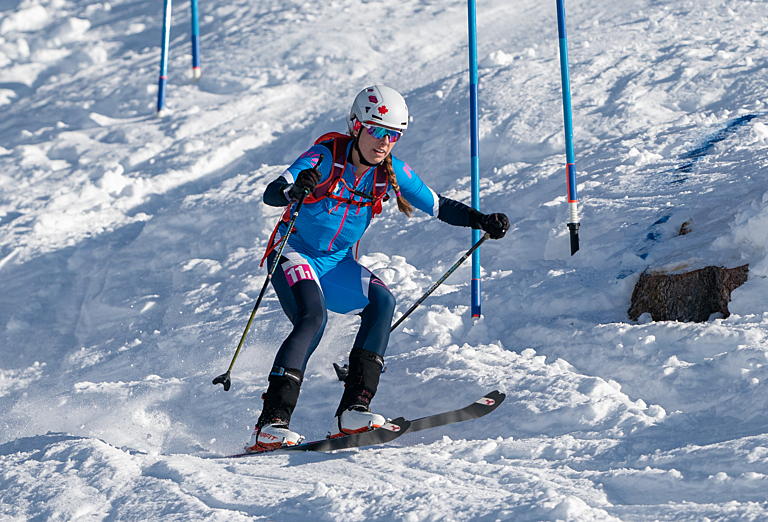
Sprint events begin with a qualification round held with interval starts as each athlete begins 20 seconds after the one ahead. Those times are used to seed athletes into elimination heats of six for the final.
The mixed relay features teams of one man and one woman. Each athlete will do two circuits of the course, alternating between each circuit. It will take approximately 15 minutes to complete each circuit, which includes two ascents and descents and a total height gain of 150 to 180 metres.
The skis used in ski mountaineering are lighter than those used in alpine skiing but, like those used in cross-country skiing, have moveable bindings to allow for proper joint movement. Boots are made to be easy to wear whether the athlete is ascending on foot, ascending on skis, or descending on skis and they feature quick fastenings to adapt to each situation.
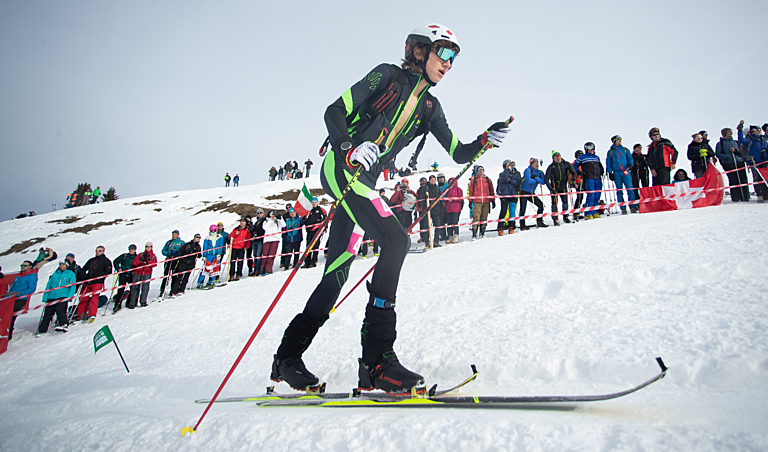
To help athletes make their ascent on skis, skins are attached to the bottom. These bristle-like, self-sticking straps allow for forward gliding and gripping the snow during push-off but stop the skier from sliding backwards. Once made of seal skins, they are synthetic in the modern world.
Ski Mountaineering History
As with other skiing sports, ski mountaineering evolved from the need that prehistoric humans had to move effectively over hilly and mountainous terrain during snowy winter months. While archaeologists have discovered images depicting figures moving across snow on what look to be wooden skis, there are also paintings from the Middle Ages which seem to show the use of skins for snow covered ascents.
The first official world championships for ski mountaineering were held in 2002, sanctioned by the International Council for Ski Mountaineering Competitions, a body of the Union Internationale des Associations d’Alpinisme. The independent International Ski Mountaineering Federation (ISMF) was founded in 2008 and has since organized the biennial world championships.
Ski mountaineering was included at the Lausanne 2020 Winter Youth Olympic Games where Canada was represented by Findlay Eyre and Ema Chlepkova.
Early in the 20th century, three Olympic gold medals were awarded for notable exploits in alpinism. In 1924, it was to recognize the participants of the 1922 Mount Everest expedition, who made three attempts to reach the summit but were unsuccessful. In 1932, the gold medal went to German brothers Franz Schmid and Toni Schmid, who were the first to successfully climb the north face of the Matterhorn. The last was awarded in 1936 to Swiss husband-wife climbers Günter Oskar Dyhrenfurth and Hettie Dyhrenfurth. Two years earlier, they had climbed the Gasherbrum and the Sia Kangri in the Himalayas. On the latter mountain, Hettie set a world altitude record for women by reaching 7442 metres.

